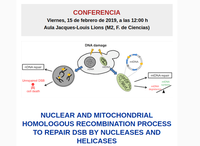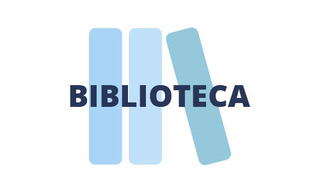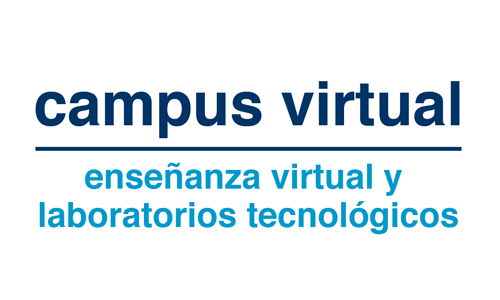Conferencia: Nuclear and mitochondrial homologous recombination process to repair DSB by nucleases and helicases
: 15/02/2019 13:00
 1
/
1
1
/
1

Dr. Manuel Bernal. Unidad de Estabilidad Genética y Oncogénesis. Institut de Cancérologie Gustave Roussy (París)
Viernes, 15 de febrero de 2019, a las 12:00 h Aula Jacques-Louis Lions (M2, F. de Ciencias)
Background: Cells are continuously exposed to different sources of DNA damage agents that can compromise genome stability. Double-strand break (DSB) is one of the most cytotoxic lesions, so faithful repair of DSB is critical to ensure cell viability. Repair of DSBs occurs by direct re-ligation of DNA ends through the non-homologous end-joining (NHEJ) pathway or by the homologous recombination (HR) pathway. Then, cells choose to activate any of these pathways according to their cell cycle progression. The HR pathway repairs the DSBs by using homologous DNA sequence as template for the broken chromosomes. This activity generates joint molecule (JM) intermediates during the different steps of the pathway. JM intermediates are sequentially matured into novel intermediates or dismantled by different specialized proteins (helicases and nucleases) to prevent their progression towards mitosis. Therefore, failure in resolving the JM intermediates results in chromosome segregation defects. Regarding mitochondrial DNA (mtDNA), DNA molecules are constantly damaged as the nuclear DNA and the mtDNA repair process needs to be coordinated with the nucleus activity. For that reason, the majority of the proteins needed for mtDNA repair are imported from the nucleus.
Organiza: Máster en Biología Celular y Molecular







